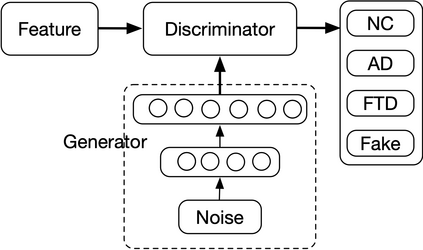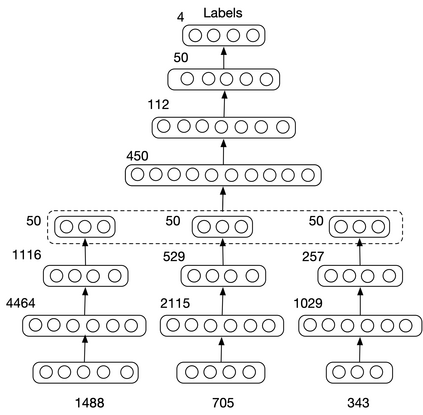Frontotemporal dementia and Alzheimer's disease are two common forms of dementia and are easily misdiagnosed as each other due to their similar pattern of clinical symptoms. Differentiating between the two dementia types is crucial for determining disease-specific intervention and treatment. Recent development of Deep-learning-based approaches in the field of medical image computing are delivering some of the best performance for many binary classification tasks, although its application in differential diagnosis, such as neuroimage-based differentiation for multiple types of dementia, has not been explored. In this study, a novel framework was proposed by using the Generative Adversarial Network technique to distinguish FTD, AD and normal control subjects, using volumetric features extracted at coarse-to-fine structural scales from Magnetic Resonance Imaging scans. Experiments of 10-folds cross-validation on 1,954 images achieved high accuracy. With the proposed framework, we have demonstrated that the combination of multi-scale structural features and synthetic data augmentation based on generative adversarial network can improve the performance of challenging tasks such as differentiating Dementia sub-types.
翻译:脑部痴呆症和阿尔茨海默氏病是两种常见的痴呆症和脑膜痴呆症的常见形式,由于其类似的临床症状模式,很容易被误诊断为彼此。两种痴呆症类型之间的区别对于确定特定疾病的干预和治疗至关重要。医学图像计算领域基于深学习的方法的最近发展为许多二进制分类任务提供了某些最佳表现,尽管在不同的诊断中应用该方法,如基于神经成像的多种痴呆症类型的区分,尚未探讨过。在本研究中,通过使用基因成形对流网络技术来区分FTD、ADD和正常控制对象,利用从磁再感应成像扫描中粗到纤维结构尺度得出的体积特征,对1,954图像进行10倍交叉校验的实验取得了很高的准确性。我们通过拟议的框架,已经表明,基于基因化对称对口网络的多规模结构特征和合成数据增强相结合,可以改进挑战性任务的绩效,例如区分Dementia亚型。







